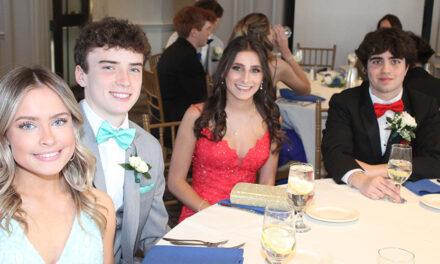Published in the March 28, 2018 edition
By DAN TOMASELLO
LYNNFIELD — Town Administrator Rob Dolan unveiled the recommended fiscal year 2019 operating and capital budgets to the Board of Selectmen last week.
Dolan has recommended a $54,778,362 operating budget for FY’19, representing a 3 percent increase over FY’18’s $53.2 million appropriation. He said the budget includes no new full-time positions.
“That means the managers of the town of Lynnfield are going to have to manage harder and do more with less,” said Dolan. “I know they are capable of doing that.”
Dolan is projecting a 5 percent increase in health insurance costs, totaling $246,523. He said the budget includes the recommended $24,850,140 school budget, representing a 4.5 percent increase from FY’18’s $23,780,038 allocation.
Additionally, Dolan said the proposed budget includes a $37,613 increase for the Essex Tech assessment. He is projecting pension costs will be increasing by 9.7 percent.
Dolan said the proposed FY’19 operating budget seeks to “manage costs, debt and stay ahead of potential crises.”
The town administrator said the proposed operating budget seeks to address several important priorities including public education, infrastructure and technology. He said the proposed balanced budget is “conservative and modest.”
“(Municipal government is) the only level of government where you must have a balanced budget,” said Dolan. “You cannot set the tax rate unless you have a balanced budget.”
Dolan noted property taxes, state aid, local receipts and enterprise funds are used to fund the budget. He said local receipts include fees, licenses, permits, rentals and motor vehicle excise taxes.
“Motor vehicle excise tax makes up more than 50 percent of local receipts estimates,” said Dolan.
Dolan said the town’s new growth has declined from $435,774 in FY’18 to an estimated $325,000 for FY’19. He said the lack of new growth is similar to the days before MarketStreet Lynnfield.
The town administrator is projecting an increase of $1,354,574 in tax revenue and $100,000 in local receipts. He said Lynnfield is a “minimum aid community” in terms of local aid.
“We are looking at approximately $68,317 in new state aid for the entire town and public schools,” said Dolan. “To put that into perspective, that covers the salary of one public school teacher. That’s for the entire town.”
Dolan said the other funds the town uses as part of the operating budget are Free Cash, the Stabilization Fund and the Capital Facilities Stabilization Fund.
“Free Cash is neither free or cash,” said Dolan. “Free Cash is the equivalent of a community’s tax return.”
Dolan recommended increasing the town’s Stabilization Fund by $100,000.
“In previous years, we have done $200,000 for the Stabilization Fund,” said Dolan. “However, we wanted to meet the goals for the schools in terms of that 4.5 percent budget. We felt we are capable of lowering that by $100,000 because the current Stabilization Fund balance is $1,728,584 or 3.15 percent of the total operating budget.”
Dolan recommended increasing the Capital Facilities Maintenance Fund by $100,000. He said the Capital Facilities Stabilization Fund’s balance is a little over $1.3 million.
The TA also proposed appropriating $300,000 to the Other Post-Employment Benefits (OPEB) Fund.
Dolan said the federal government is “slowly and absolutely withdrawing direct aid to communities.”
“Yet regulations remain totally unchanged,” said Dolan. “Public education is hurt the worst by this. There is no doubt the state is making a real investment in education, however, the challenge for our town going forward is we are a minimum aid community. We are getting less than $30 for every new student who comes to the town of Lynnfield. That really covers nothing.”
Dolan said the proposed “Millionaire’s Tax” that will be appearing on the ballot in November as well as another potential ballot question that would reduce the state sales tax could have an impact on local aid going forward.
“Both of those mid-year could have a dramatic effect on where the state’s revenues are going, positively or negatively, depending on how you look at the issue,” said Dolan. “We need to prepare for that and this modest budget prepares for that instability.”
Capital budget
Dolan’s proposed capital budget for FY’19 currently totals $1,753,731.
The capital budget includes $250,000 for school technology, $500,000 for paving, $70,000 for electronic voting and check-in at Town Meeting, $150,000 for the town’s technology, $111,000 for self-contained breathing apparatus (SCBA) for the Fire Department, $70,000 for a 30-seat passenger bus, $47,889 for a police cruiser and additional items for public safety equipment.
Dolan is also recommending an additional $50,000 to replace the South Fire Station’s roof. DPW Director John Tomasz recently told the selectmen the town allocated $70,000 for the project three years ago, but said the project’s cost estimates have averaged around $115,000.
Selectmen weigh in
Selectmen Chairman Chris Barrett thanked Dolan, Assistant to the Administration Bob Curtin and Town Accountant Julie McCarthy for their efforts in developing the FY’19 budget.
“This is a modest increase of 3.45 percent and I think there is a whole lot we can do with this budget,” said Barrett. “We certainly have tightened our belt this year with the new growth leveling off.”
While Selectman Dick Dalton expressed his support for the FY’19 budget, he said, “It doesn’t bode well for the future.”
“If you look back over the last four or five years, we have had a marked trend of declining surpluses and we are just about break even in this particular budget,” said Dalton. “We can’t have a school budget increasing at 4.5 percent or a town budget at 3 percent because our revenue growth isn’t keeping pace with our expenses. While this budget does it for this year, we have to look down the road and do a lot more long-range planning in respect to how we are going to approach some of these issues. We will get by this budget year, but the future is going to take some managing on part of the Board of Selectmen, department heads, the School Department and the School Committee.”
Selectman Phil Crawford agreed with Dalton’s viewpoint. He noted the 2.5 percent property tax increase each year “just covers the increase in our education costs.”
“We are very much dependent on state aid, new growth and local receipts,” said Crawford. “We have to look at getting through the next two years with limited growth and possibility looking back at our collective bargaining agreements to see if we could get some relief there. We got every penny out of this budget.”
Crawford proposed reducing the OPEB appropriation from $300,000 to $200,000 and increasing the Stabilization Fund from $100,000 to $200,000. Barrett, Dalton and Dolan supported Crawford’s proposal.




